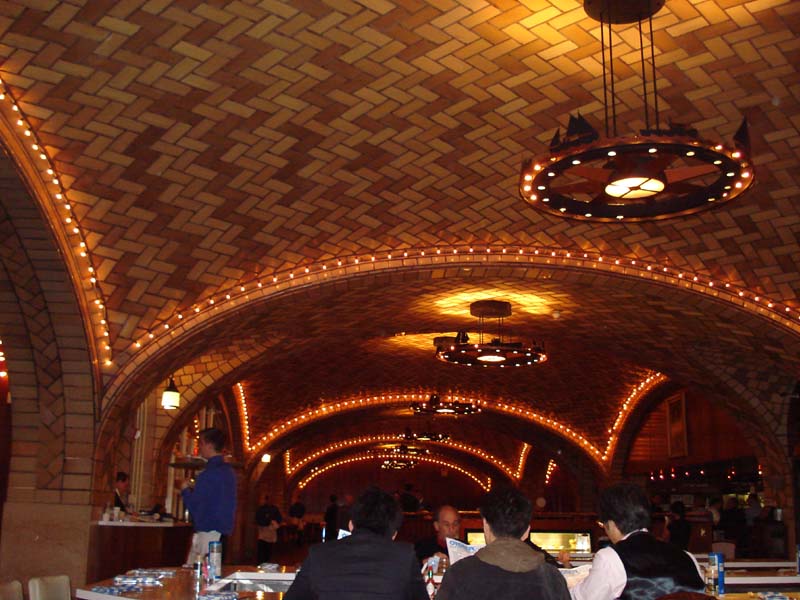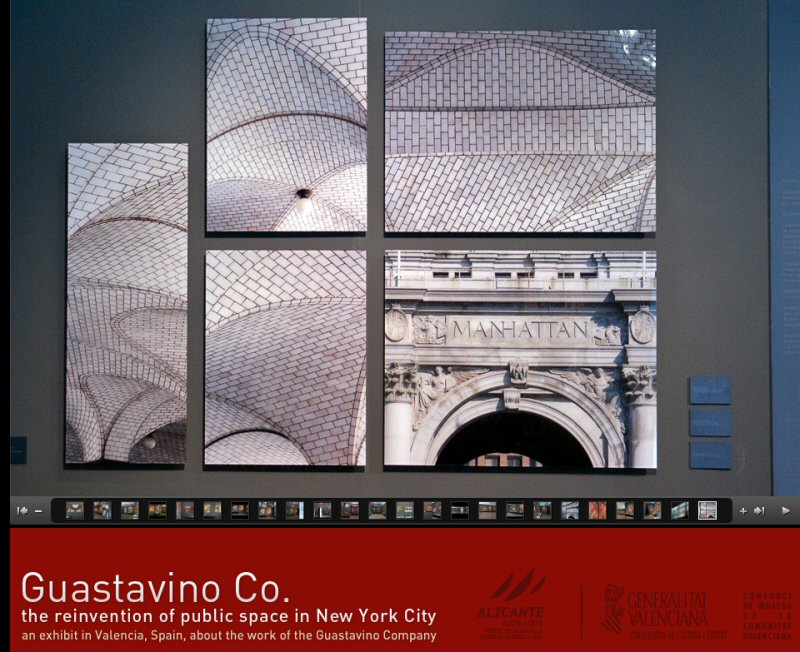Guastavino Tile
1/14/13


|
From Wilipedia - Guastavino tile is the "Tile Arch System" patented in the United States in 1885 by Valencian (Spanish) architect and builder Rafael Guastavino (1842-1908).[1] It is a technique for constructing robust, self-supporting arches and architectural vaults using interlocking terracotta tiles and layers of mortar to form a thin skin, with the tiles following the curve of the roof as opposed to horizontally (corbelling), or perpendicular to the curve (as in Roman vaulting). This is known as timbrel vaulting, because of supposed likeness to the skin of a timbrel or tambourine, or "Catalan vaulting". |
|
Guastavino tile is found in some of New York's most prominent Beaux-Arts landmarks and in major buildings across the United States. The Guastavino terra cotta tiles are standardized, less than an inch thick, and approximately 6 inches (150 mm) by 12 inches (300 mm) across. They are usually set in three herringbone-pattern courses with a sandwich of thin layers of Portland cement. Unlike heavier stone construction, these tile domes could be built without centering. Each tile was cantilevered out over the open space, relying only on the quick drying cements developed by the company. Akoustolith was one of several trade names used by Guastavino. Comments: Interestingly, Guastavino retired in Asheville, NC. He built the Basilica of St. Lawrence there, and Tom Trout once arranged for us to have a tour:
http://www.mha-net.org/docs/v8n2/wildac98.htm The Biltmore estate there also has a bunch of his work. There are many examples in NYC, including The Oyster Bar at Grand Central Station, and the Cathedradal of St. John the Divine in Harlem. It features the largest dome he ever built, 40m diameter, no centering. Best Regards ......... Norbert Also at Elis Is - Jim
|

Back to Preservation Links
Buckley Rumford Fireplaces
Copyright 1995 - 2013 Jim Buckley
All rights reserved.
webmaster